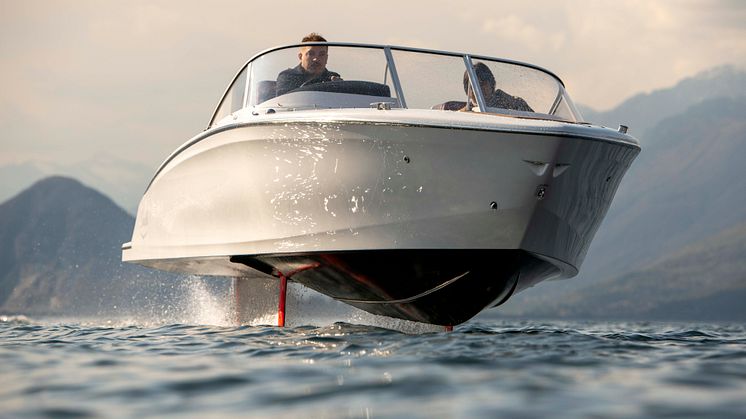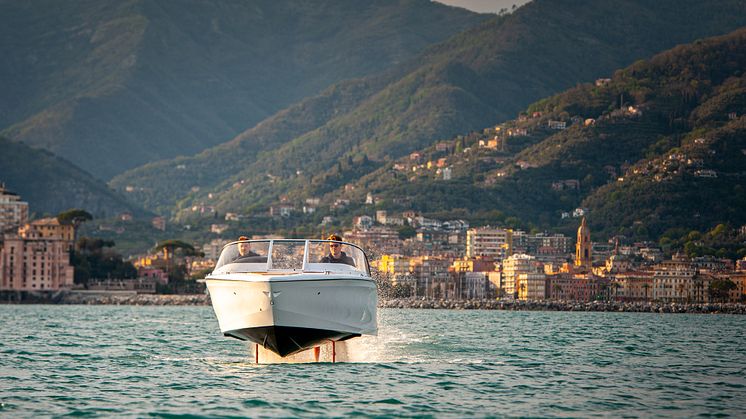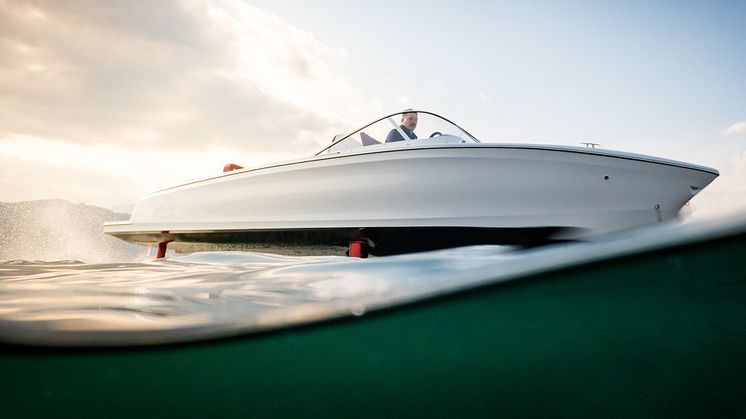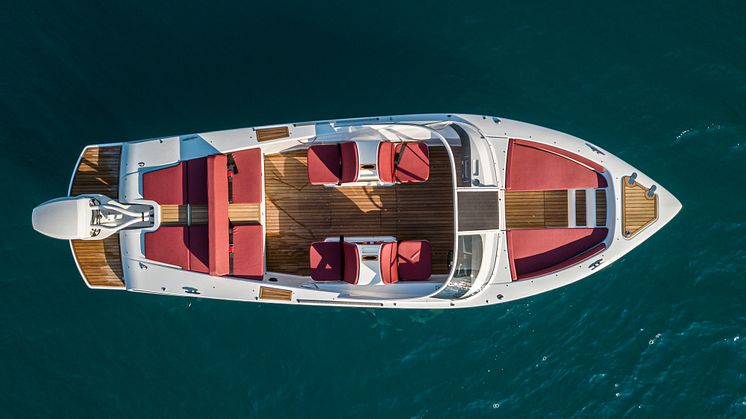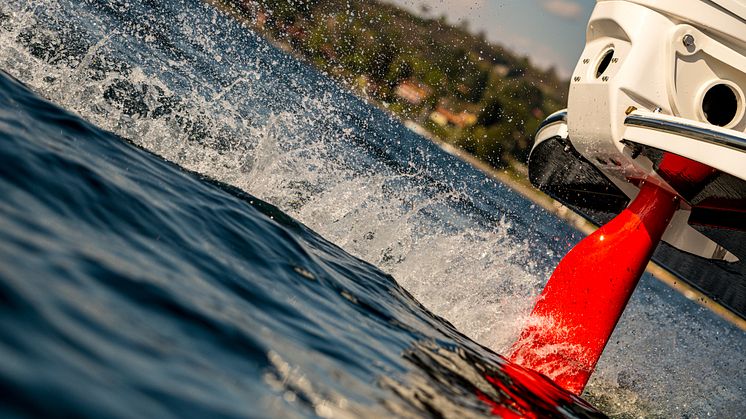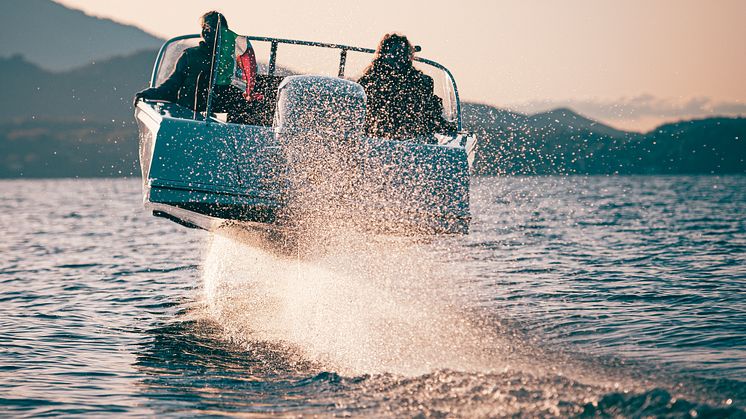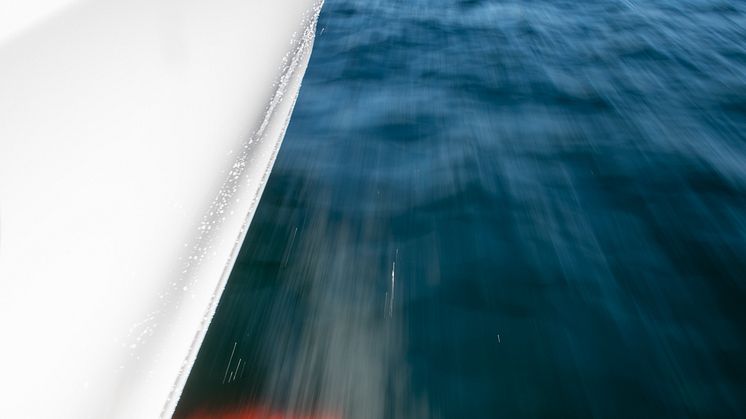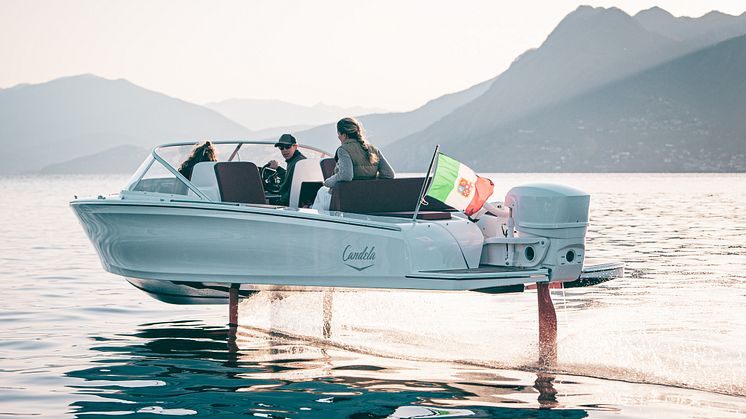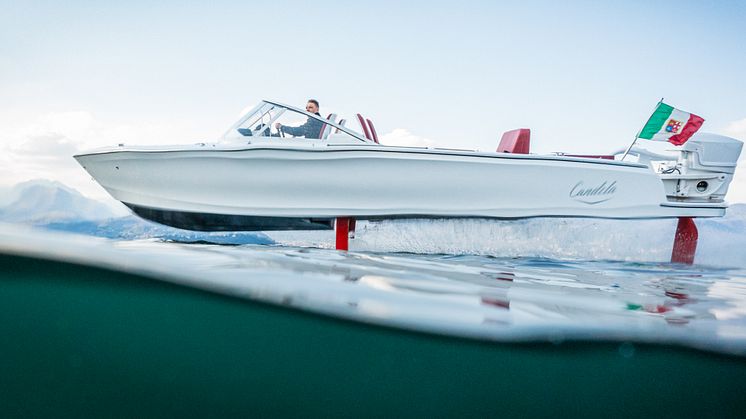
Press release -
Try out the game-changing electric powerboat Candela C-7 in Miami
Thanks to a decade-old invention coupled to advanced software and computers, the electric Candela C-7 electric sportsboat flies above the water with a longer range and higher speed than any other electric boat before it. This week, members of the press can try out Candela C-7 in Miami ahead of the Miami Boat Show.
Taking inspiration from fighter jets and drones, the Swedish-made Candela C-7 is the world’s first electric boat with the elusive combination of long range and high speed.
The 6-passenger open boat flies above the waves at a speed of 30 knots, using very little power from its 40 kWh battery.
Making fast electric boats is inherently difficult. To overcome the water friction, conventional hulls need huge batteries to attain higher speeds. Even then, conventional electric boats have considerably shorter range than fossil fuel competitors.
The secret behind Candela’s efficiency is a decade-old invention, the hydrofoil, coupled to modern computers, software and sensors.
At speeds above 16 knots, two underwater wings provide enough lift to raise the hull above the water, reducing water friction by 80%.
This allows for a range of 50 nautical miles at 22 knots, which is 3 times longer than any other fast electric boat on the market.

But Candela’s hydrofoil tech has other benefits, too.
While flying, the C-7 is stabilized by a computer similar to the Flight controllers used in modern fighter jets. The hydrofoils are automatically adjusted 100 times per second to ensure stability in flight.
The result is an artificially smooth and completely silent drive, even in winds and waves.

Thanks to the efficiency of the foils and the streamlined electric propulsion unit, the cost of operating a C-7 is 95% lower than driving a conventional fossil fuel boat. At a cruising speed of 20 knots, the energy usage per nautical mile is just 0,8 kWh - the equivalent of 0,2 liter of gasoline.
To save weight, both hull and deck are made from carbon fiber and weigh only 240 kg. At a total weight of 1 350 kg, the C-7 is thirty percent lighter than a conventional fiberglass boat. Design and manufacturing take place in Stockholm, Sweden, where Candela's 70-strong team of engineers and technicians already are currently trying out the mass market Candela C-8 as well as developing the hydrofoiling ferry P-30 for the city of Stockholm.
– Flying above the waves in total silence is a far better experience than bumping around in a conventional boat. Once you have experienced electric hydrofoiling, it's hard to go back to fossil fuel boats, says Gustav Hasselskog, the founder and CEO of Candela.
The Candela C-7 is available for media test drives between Friday, February 11 and 16.
Topics
Candela's mission is to speed up the transition to fossil fuel-free lakes and oceans. Candela C-7 is the world's first electric hydrofoil boat in serial production. Combining long range, high speed and a silent drive train, C-7 is the first electric boat that can outperform fossil fuel powerboats.


